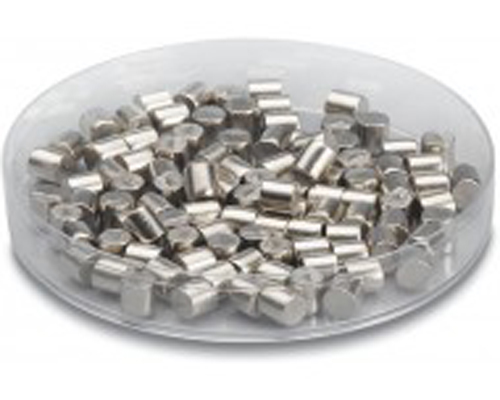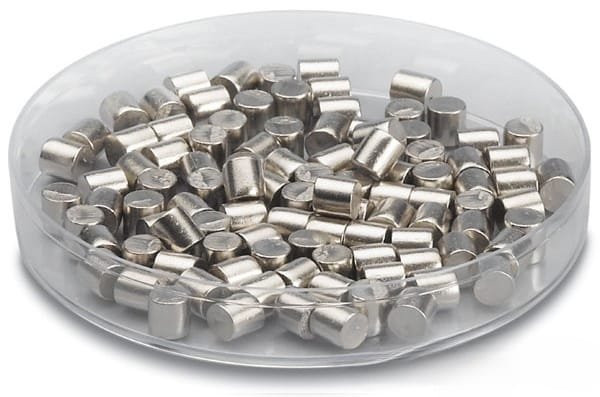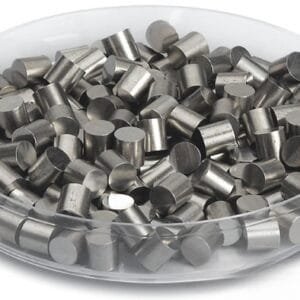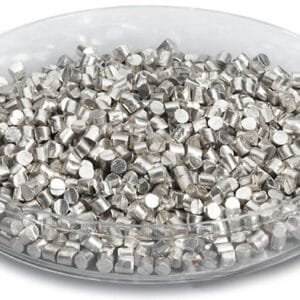Palladium Evaporation Material Description
Palladium is a silvery-white transition metal known for its softness, ductility, and plasticity. It is a member of the platinum group of elements, located in group VIII of the fifth period on the periodic table, and is represented by the symbol Pd. The platinum group metals (PGMs), which include palladium, platinum, rhodium, ruthenium, iridium, and osmium, share similar chemical properties. Among these metals, palladium stands out for having the lowest melting point and the least density.
High-purity palladium evaporation materials are essential for achieving top-quality deposited films in various deposition processes. TFM is dedicated to producing palladium evaporation materials with purities reaching up to 99.95%, ensuring product excellence through stringent quality control measures.

Palladium Evaporation Material Specification
| Material Type | Palladium |
| Symbol | Pd |
| Melting Point | 1,554 °C |
| Color/Appearance | Silvery White Metallic |
| Theoretical Density | 12.02 g/cc |
| Z Ratio | 0.357 |
| Synonyms | Pd Pellets, Pd Pieces, Pd Evaporation Pellet, Palladium Pellets, Palladium Pieces, Palladium Evaporation Pellet |
Palladium Evaporation Material Application
These materials are integral to various deposition processes, including semiconductor deposition, chemical vapor deposition (CVD), and physical vapor deposition (PVD). In the field of optics, they are employed for a range of applications such as enhancing wear resistance, creating decorative coatings, and developing advanced display technologies.
Palladium Evaporation Material Packaging
We ensure that our palladium evaporation materials are carefully managed to avoid any damage during storage and transportation, maintaining the products in their original, high-quality condition.
Get Contact
TFM offers palladium evaporation materials in a range of forms, purities, sizes, and price points. We focus on producing high-purity e-beam evaporation materials, designed to provide maximum density and minimal average grain sizes. For up-to-date pricing on evaporation pellets and other deposition materials not listed, please contact us with your inquiry.


 MSDS File
MSDS File



Reviews
There are no reviews yet.